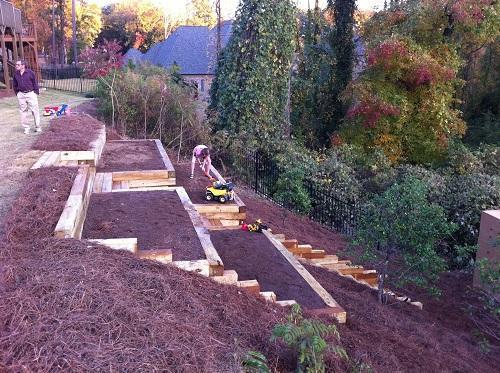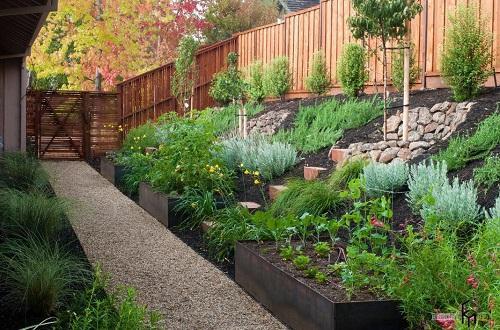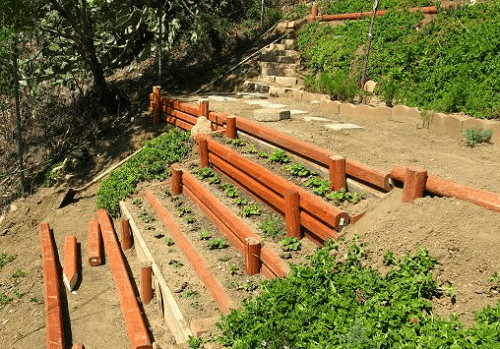How to equip a vegetable garden on a slope?
A site located on a slope is not yet a reason to be upset. Of course, making it suitable for living and growing crops will take some effort. You will need to competently plan the site, divide it into zones and strengthen it. All this will somewhat increase the financial investment, but the result is worth it.
Advantages and disadvantages of a plot on a slope

Before proceeding with the arrangement of a vegetable garden on a site located on a slope, it is worth evaluating all its advantages and disadvantages.
Among the positive factors of this location are the following:
- such a site, with the correct design, will acquire a unique individuality;
- there is a great opportunity to design alpine slides and waterfalls;
- the site is clearly visible from the house, especially if it is at the highest point;
- on a flat area, water never stagnates;
- the southern slope will allow you to grow any crops, even those that are particularly demanding for lighting.

The main disadvantages include larger cash investments, in contrast to flat terrain. When planning a site, you need to pay attention to the following points:
- since water will constantly drain without lingering in the soil, it will be necessary to water the plants more often;
- it is not necessary to place residential buildings in the lower part of the site in order to avoid flooding;
- the possibility of landslides should be excluded, further strengthening the site;
- the northern slope practically deprives cultivated plants of the chance to survive due to the lack of light.
How to equip a vegetable garden on a slope

With a competent approach, even on uneven terrain with a slope of more than 15%, you can equip a vegetable garden. The most suitable solution to the problem is to divide the site into terraces and pre-strengthen them.
To do this, determine the difference in heights and divide by the size of the horizontal base. Next, the site is divided into strips of a certain size. Gradually, starting from the top point, terraces are formed. The cut earth is lowered to the lower level and used to form the site. Terraces are arranged either in a checkerboard pattern or using asymmetry.

To avoid slipping of the soil, the terraces are additionally reinforced with retaining walls. For their manufacture, metal and reinforced concrete are used. Walls made of wood look beautiful, however, they are not so durable. It is relatively inexpensive to create retaining walls of stone. To fasten individual stones together, a cement solution is used. This design will last for more than one year.
In addition, it will be necessary to install drainage pipes on the site, through which water, after rain, will drain from the upper terrace to the lower levels.
Garden plants are planted either inside the retaining wall of the terrace (where the nutrient soil is pre-filled), or placed in boxes.
You cannot place the beds on the lowest terrace. For a garden, you should choose a higher area, illuminated by the sun and without drafts.
To strengthen the slopes, shrubs with a powerful root system are planted, such as rose hips, lilacs, sea buckthorn, and Japanese quince. Planted in the form of a hedge, such plants will also serve as protection from the wind.